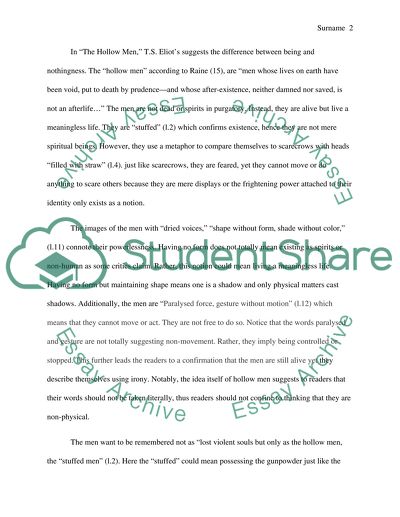Cite this document
(“T.S. Eliot's The Hollow Men Essay Example | Topics and Well Written Essays - 1750 words”, n.d.)
Retrieved from https://studentshare.org/literature/1681867-ts-eliots-the-hollow-men
Retrieved from https://studentshare.org/literature/1681867-ts-eliots-the-hollow-men
(T.S. Eliot'S The Hollow Men Essay Example | Topics and Well Written Essays - 1750 Words)
https://studentshare.org/literature/1681867-ts-eliots-the-hollow-men.
https://studentshare.org/literature/1681867-ts-eliots-the-hollow-men.
“T.S. Eliot'S The Hollow Men Essay Example | Topics and Well Written Essays - 1750 Words”, n.d. https://studentshare.org/literature/1681867-ts-eliots-the-hollow-men.


